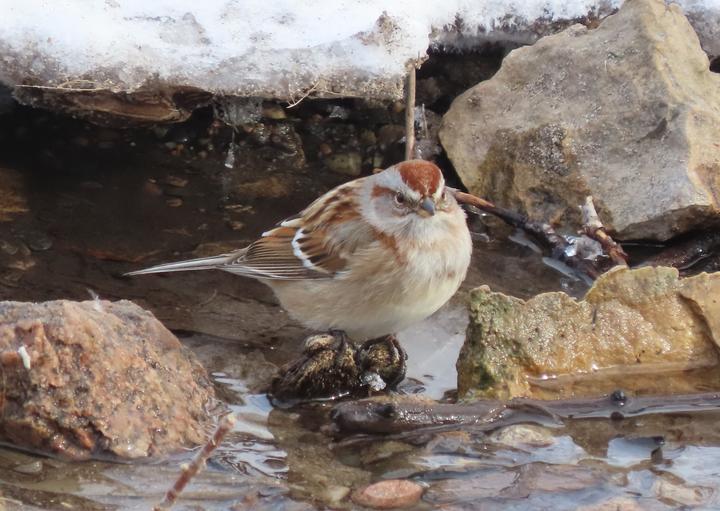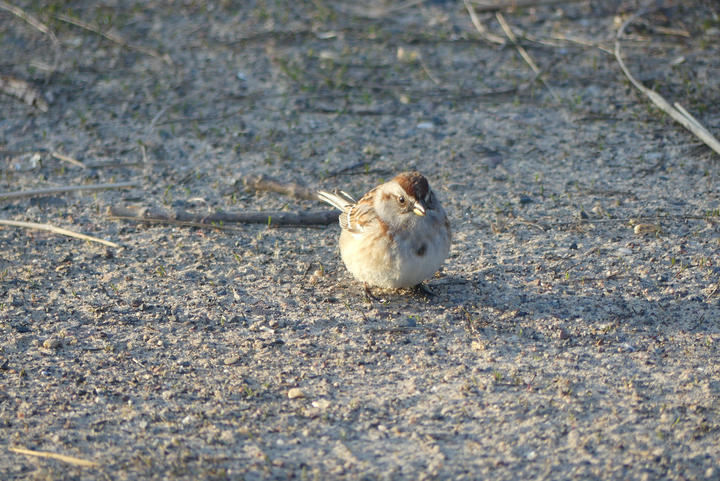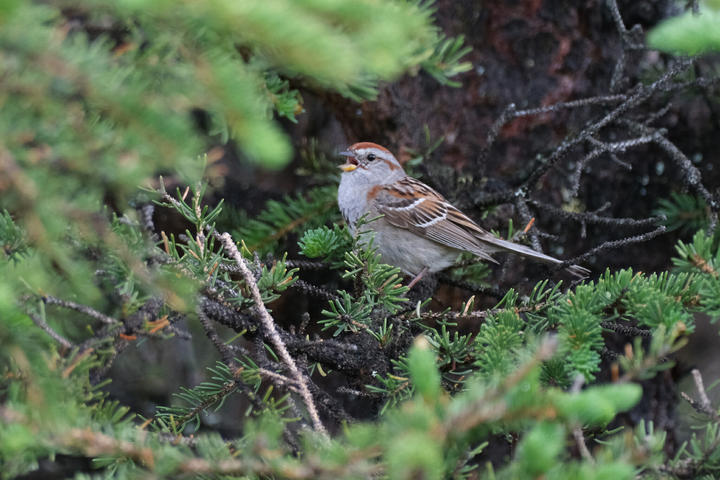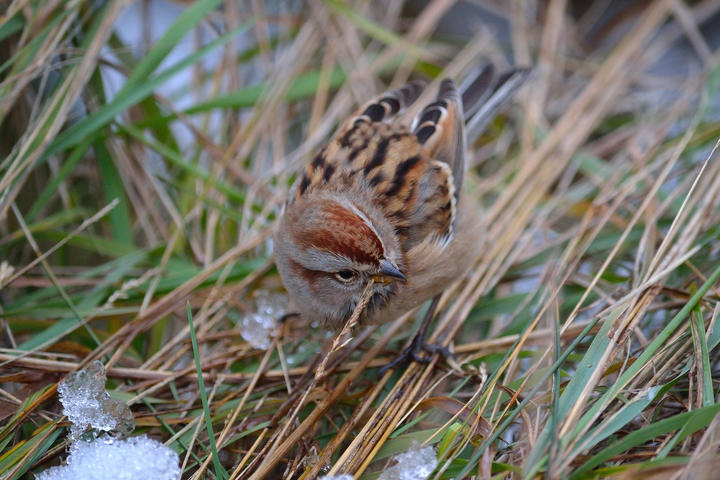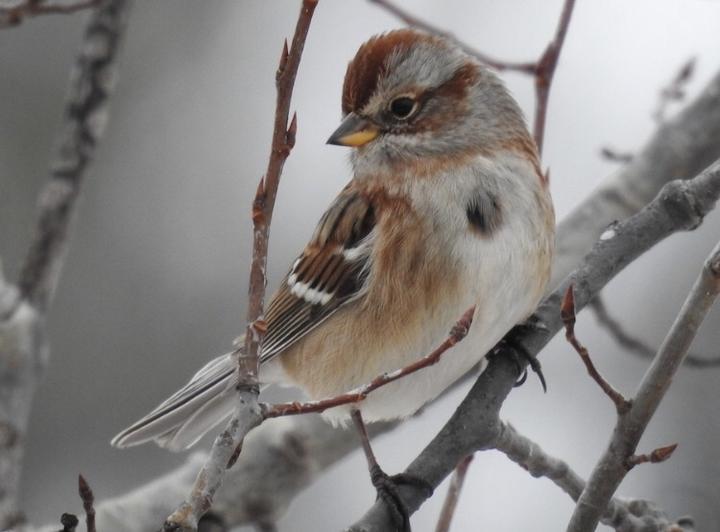More names for this bird
Dakota: Wakasaŋsaŋ (sparrow)
The Dakota and Anishinaabe were among the earliest people to name Minnesota’s plants and animals, as well as to understand them in relation to Minnesota’s climate and seasons. Those original names are still in use, and several are included on the Season Watch website. However, complete translations were not available.
Latin (or scientific name): Spizella arborea
The scientific community has a convention of assigning agreed-upon Latin names to every kind of organism. Using scientific names helps people communicate confidently about the same organism and organize lifeforms based on how closely related they are.
Page contents
About the American tree sparrow
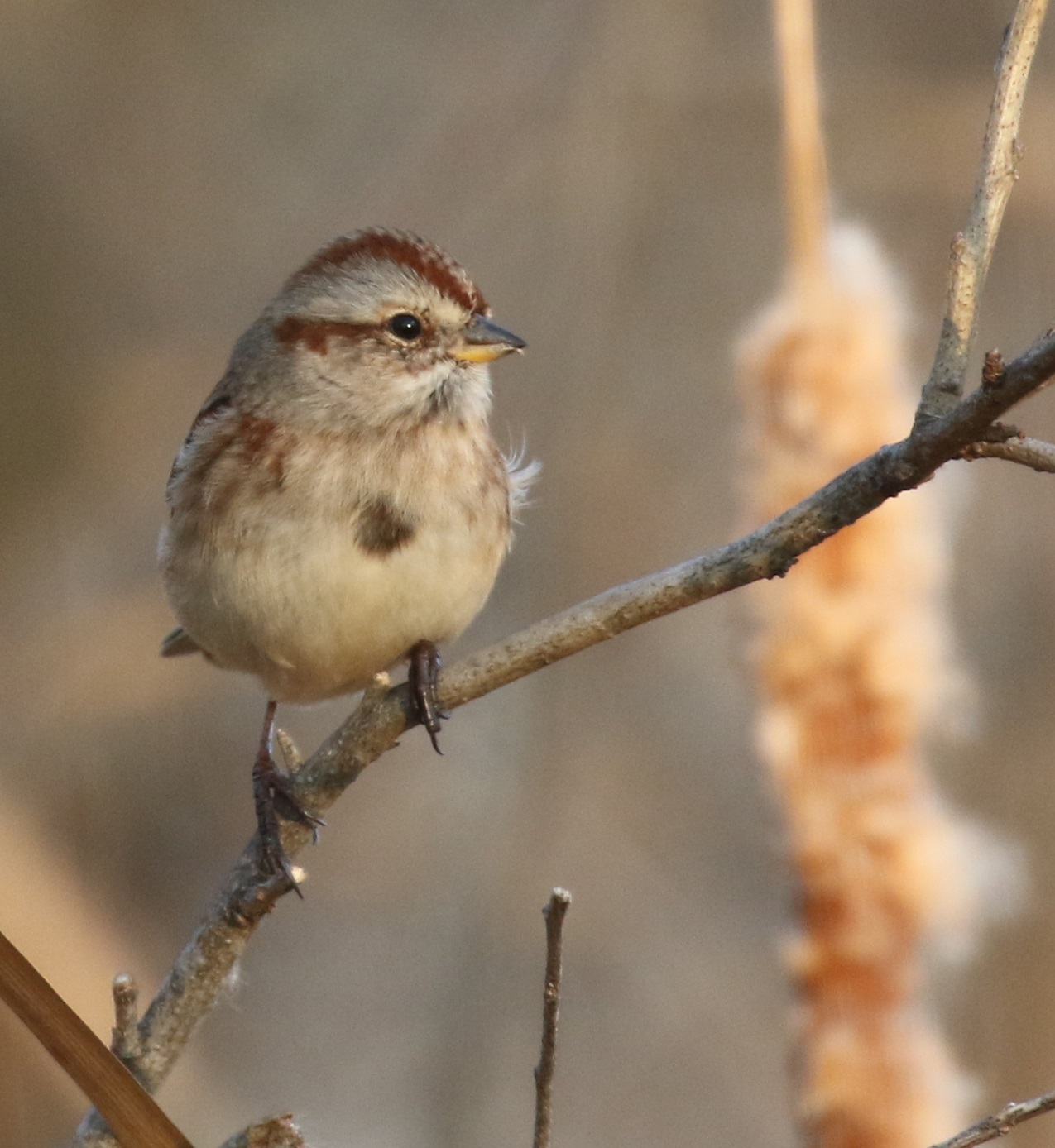
November 8, 2020, Nobles County, Minnesota
Photo © Michael Woodruff, some rights reserved (CC-BY-NC)
iNaturalist observation
About the American tree sparrow
- The American tree sparrow is a plump songbird with a rusty cap, a bicolored bill, and an eyeline on a gray face.
- From fall to spring they eat mostly seeds. During summer they eat amlost exclusively insects like beetles, moths and caterpillars.
- They will nest on or near the ground at the base of a shrub or only as high as four feet in a spruce or willow tree.
- Parent birds incubate eggs for ten to fourteen days. Young are able to leave the nest in about two weeks.
- Fun fact: Despite having "tree" in their name, American tree sparrows are ground birds. They forage on the ground, nest on the ground, and breed in scrubby or partly open areas.
- American tree sparrows migrate. Expand the "Migration animation" section below to learn more.
Migration animation
Migration animation
Click the full-frame icon (lower right corner of video) to play at full size.
More about eBird's abundance animations
eBird data from 2006-2020. Estimated for 2020. Fink, D., T. Auer, A. Johnston, M. Strimas-Mackey, O. Robinson, S. Ligocki, W. Hochachka, L. Jaromczyk, C. Wood, I. Davies, M. Iliff, L. Seitz. 2021. eBird Status and Trends, Data Version: 2020; Released: 2021. Cornell Lab of Ornithology, Ithaca, New York. https://doi.org/10.2173/ebirdst.2020
Visual guide to phenology
Watch for American tree sparrows' presence (or absence), abundance, and behaviors at different times of year.
Note to observers
This page explains general clues to watch for when observing American tree sparrow phenology. However, this page does not explain how to identify this bird or collect data in a standardized way.
- For help with identification, see The Cornell Lab's All About Birds.
- For guidance on collecting data, see Nature’s Notebook.
Audio resources
Visit All About Birds for recordings of songs and calls by American tree sparrows.
More resources
Keep exploring Season Watch
Keep exploring Season Watch
Co-author: Jayme Hogan, Minnesota Master Naturalist
